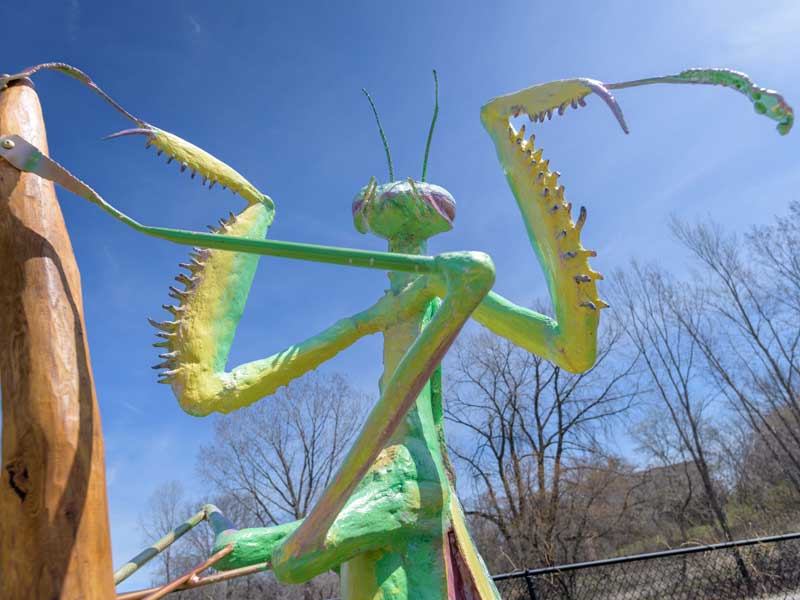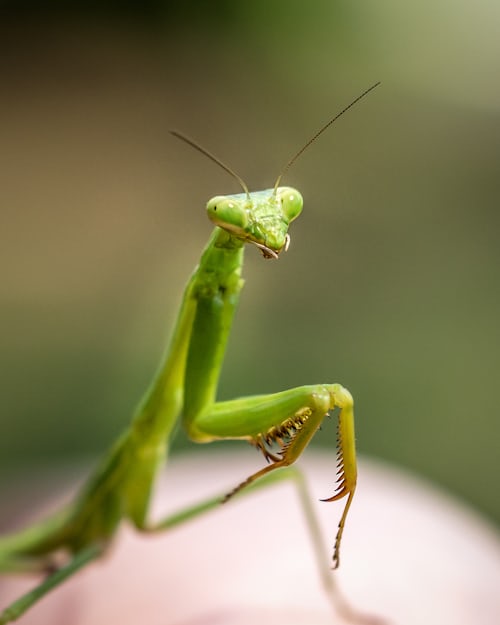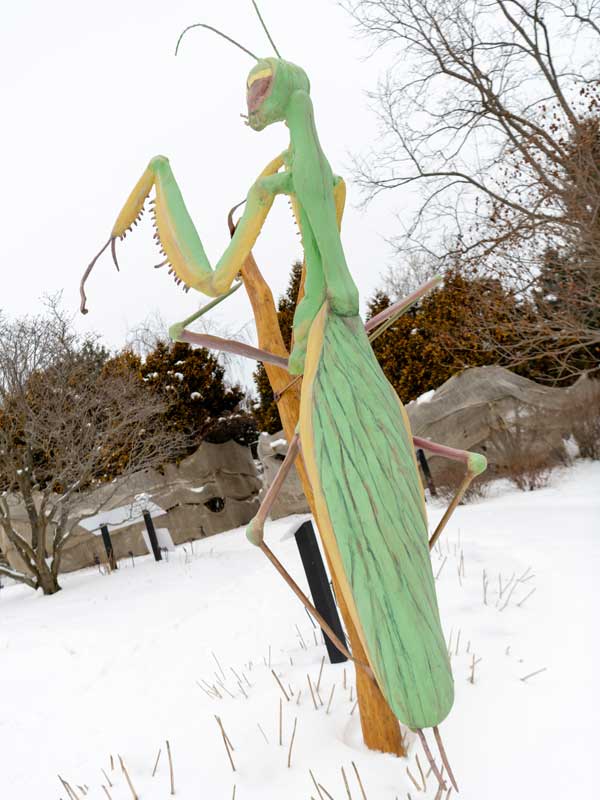Praying mantises are an intriguing insect to find in the outdoors. They got their name – you guessed it! – from the way their arms rest in a praying stance. Many of us seem to enjoy their presence because they’re an interesting insect, but they serve a bigger purpose than just looking cool!

What is a Praying Mantis?
Even though a praying mantis kind of looks like it came from outer space, these elongated insects with bulging eyes are far from being an alien. If you have never seen one in real life before don’t be scared or squish it… they are here to help!
Using their bright green color, they can easily blend in with the greenery around them, making it easier to stalk their prey. Mantises are primarily carnivores meaning they eat other smaller bugs and insects, including the bad pests that can lurk in your garden, landscape, and neighborhood.

Don’t Squish Them, Feed Them!
Since they are carnivorous, praying mantises typically eat all the bad bugs that can hurt your garden and landscape. They eat mosquitos, mites, moths, wasps, flies, cockroaches, and many more insects.

PC: Wisconsin Horticulture
When you spot a praying mantis in your garden, landscape, or local neighborhood, it’s attracted to the food sources there. It’s a natural ambush predator in the food chain, and an important party of the ecosystem, so quell your urge to shoo away bugs, and let them feed!
Keep an Eye Out for Mantis “Nests”
When a praying mantis is ready to reproduce, they will lay eggs in a protective casing called ootheca. When they are creating the casing, they will attach them to sticks and stems of local flora. To help mantises lay their eggs and survive the winter, consider limiting any fall cleanup and leave stems and sticks alone until the spring.

PC: Wisconsin Horticulture
When removing plants, make sure to check for oothecas. They are hard to spot right away but with enough patience and a thorough search, you can help baby mantises hatch and help your local environment’s food chain!
Avoid Using Pesticides
You should also avoid using harmful pesticides. Using pesticides may rid you of the annoying little bugs that are harming your garden or landscape, but it can cause praying mantises to die or to leave your outdoor area entirely. With a praying mantis around, along with other natural predators, most of those bad bugs will be under control.

Praying mantises are incredible creatures. With its alien-like stature and heroic pest-eating powers, they are definitely an insect that should stick around.
If you would like to learn more about the incredible praying mantis, visit the Garden to see our larger-than-life mantis hanging out in the Bug B&B display as part of our ongoing Habitat exhibit – it’s here through April 30!
Habitat was developed by Smithsonian Gardens and is made available by the Smithsonian Institution Traveling Exhibition Service.
Sources




